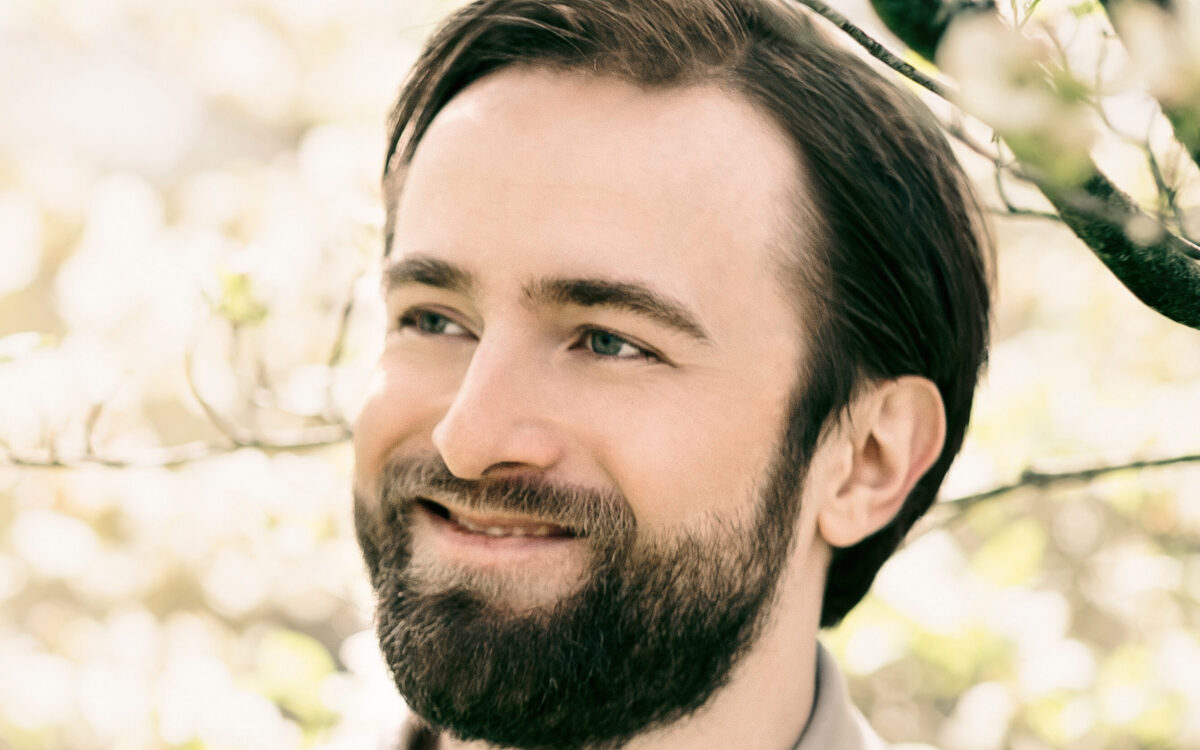Symphony No. 4
Pyotr Ilyich Tchaikovsky was born at Kamsko-Votkinsk, Vyatka province, on May 7, 1840, and died in St. Petersburg on November 6, 1893. He began the Symphony No. 4 in May 1877 and completed the score on January 19, 1878. Nikolai Rubinstein conducted the first performance on March 4 that year, in Moscow.
The score of Tchaikovsky’s Symphony No. 4 calls for 2 flutes and piccolo, 2 oboes, 2 clarinets, 2 bassoons, 4 horns, 2 trumpets, 3 trombones, tuba, timpani, triangle, cymbals, bass drum, and strings. The symphony is about 44 minutes long.
For Tchaikovsky, the Symphony No. 4 was a breakthrough work, a bounding creative leap beyond his first three symphonies. In scale, control of form, intensity, and ambition it towers above any symphonies previously produced by other Russian composers, most of whom shunned the symphonic form in favor of operas and programmatic works. Here, in one of the masterpieces of late Romanticism, Tchaikovsky combines his strong sense of the theatrical (already demonstrated in Romeo and Juliet, Francesca da Rimini, and Swan Lake) with a heightened mastery of orchestration and thematic development.
The year of the composition of the Fourth Symphony—1877—has been called the most fateful year in the composer’s eventful and emotionally volatile life. It was in 1877 that he made the rash and ultimately tragic decision to marry Antonina Ivanovna Milyukova, a woman he barely knew. He did so (on July 18) in a panic-stricken attempt to conceal—or even overcome—his homosexual inclinations.
Not surprisingly, given Tchaikovsky’s lack of sexual interest in women and the unbalanced personality of Milyukova, the marriage ended in disaster. It lasted a mere two months, at the end of which Tchaikovsky attempted suicide by walking into the frigid Moscow River in the hopes of contracting pneumonia. (Those who have seen Ken Russell’s film-bio of Tchaikovsky, The Music Lovers, will no doubt remember the scene.) Fleeing his wife and his botched attempt at a “normal” life, he escaped to St. Petersburg and then to Europe. It was there, far from the problems that awaited him in Russia, that he completed the Fourth Symphony, begun in the spring. From this time on, Tchaikovsky restlessly divided his time between Russia and Europe, feeling entirely comfortable in neither.
Milyukova was not the only woman in Tchaikovsky’s life at the time. The other was Nadezhda von Meck, a wealthy widow so passionate about the composer’s music that she became his patron, giving him large sums of money so he could continue composing without financial worries. At von Meck’s insistence, however, they never met, and instead maintained a remarkable epistolary relationship. During the stressful period of his failed marriage, Tchaikovsky turned to von Meck for emotional and financial support. She did not fail him. In gratitude, Tchaikovsky dedicated to her his new Fourth Symphony, but anonymously, as they had agreed: “To my best friend.”
Not only did the composer dedicate the Fourth Symphony to von Meck; he also provided her with a detailed written description of its emotional program. “In our symphony there is a programme,” he wrote, “i.e., it is possible to express in words what it is trying to say, and to you, and only to you, I am able and willing to explain the meaning both of the whole and of the separate movements.”
The symphony’s “signature”—among the most famous music Tchaikovsky ever wrote—is its stunning, even alarming opening fanfare scored for brass and woodwinds. This introduction, Tchaikovsky told von Meck, “is the seed of the whole symphony, undoubtedly the main idea….This is fate, this is the fateful force which prevents the impulse to happiness from attaining its goal….It is invincible, and you will never overcome it. You can only reconcile yourself to it, and languish fruitlessly.” This “fate” motif appears most prominently in the opening movement, but reappears dramatically in the finale. (Tchaikovsky would go even further in the Fifth Symphony, using a “signature” motif in all the movements.) In the finale, the “fate” motif grows (at measure 200) out of a folk song in a most ingenious and startling manner.
If this fanfare represents thwarted happiness, then the stuttering waltz theme that follows in the first movement also reflects frustration, Tchaikovsky told von Meck. The theme is in 9/8 meter, which lends it a fluid and yet halting gait. “The cheerless and hopeless feeling grows yet stronger and more burning. Is it not better to turn away from reality and submerge yourself in daydreams?” These daydreams (remember that the title of Tchaikovsky’s First Symphony was “Winter Daydreams”) are reflected in the melancholy, rising-and-falling theme given to the clarinet.
Of the much shorter second movement (Andantino in modo di canzone), Tchaikovsky said this: “This is that melancholy feeling which comes in the evening when, weary from your labor, you are sitting alone, you take a book—but it falls from your hand. There comes a whole host of memories. You both regret the past, yet do not wish to begin your life again. Life has wearied you….It’s sad and somehow sweet to immerse yourself in the past.”
The scherzo (Pizzicato ostinato) offers respite from the emotional intensity of the outer movements. Constructed in classical, even Mozartian fashion, in three sections (ABA), this delicate and innovative confection is dominated by the strings, playing pizzicato, with a middle Trio section featuring a playful military-style theme in the brass and winds.
A well-known Russian folk song (“A little birch tree stood in the field”: “Vo polye beryozinka stoyala”) provides the central focus for the relatively brief but fiery final movement. (It’s not labeled “Allegro con fuoco”—“Fast, with fire”—for nothing!) Some years earlier, Russian composer Mily Balakirev (1837-1910) had used the same folk song in his Overture on Three Russian Themes, but treated it very differently. Balakirev retained the circular free rhythmic structure of the tune, remaining faithful to the Russian folk tradition. But Tchaikovsky, more of a “Westernizer,” adds two beats after the first phrase, squaring the tune to fit into conventional 4/4 meter. By the finale’s end, Tchaikovsky has whipped this innocent little tune into a tragic frenzy that culminates in the majestic reentry of the “fate” theme.
“Hardly have you managed to forget yourself and to be carried away by the spectacle of others’ joys, than irrepressible fate again appears and reminds you of yourself,” the composer wrote to von Meck about the finale. “But others do not care about you. They have not even turned around, they have not glanced at you, and they have not noticed that you are solitary and sad.”
Musicologists and biographers have long debated how accurately Tchaikovsky’s overheated description of the Fourth Symphony reflects its content. They do agree on one thing. The score, despite some flaws (excessive repetition, and what Russian composer Sergei Taneyev called an overuse of “ballet music”), established Tchaikovsky as one of the masters of the symphonic form in Russia and elsewhere.
Harlow Robinson
Harlow Robinson is an author, lecturer, and Matthews Distinguished University Professor of History, Emeritus, at Northeastern University. His books include Sergei Prokofiev: A Biography and Russians in Hollywood, Hollywood’s Russians. He has contributed essays and reviews to The Boston Globe, The New York Times, Los Angeles Times, Symphony, Musical America, and Opera News, and program essays for the Boston Symphony, Los Angeles Philharmonic, New York Philharmonic, Aspen Music Festival, and Metropolitan Opera.
The American premiere of Tchaikovsky’s Symphony No. 4 was given by Walter Damrosch with the New York Symphony Society on February 1, 1890.
The first Boston Symphony performances were partial ones, when Arthur Nikisch led just the second and third movements here on October 18, 1890, subsequently programming just those movements for numerous out-of-town and tour performances between that month and February 1892, with a final performance of the two paired movements on a March 1892 benefit concert in Boston. The first complete BSO performances of the Tchaikovsky Fourth were given by Emil Paur on November 27 and 28, 1896.


